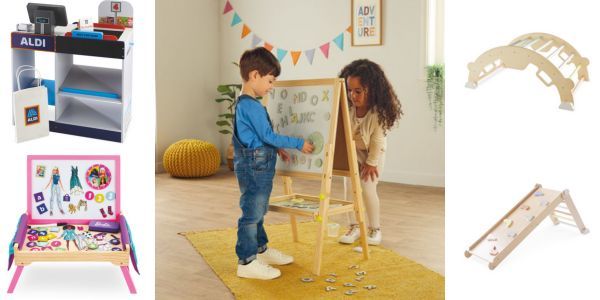.png)
.png)
It can be tricky to know exactly when to move your baby onto solids (also called weaning).
Aunty Betty will tell you her kids were chomping down on rusks when they were six weeks old. Things change and now we know that’s not great advice!
The World Health Organisation (WHO) recommends your baby only has breast milk until they’re six months old. And your health visitor has probably told you to start introducing solids around six months. But let’s clear a few things up…
- You don’t stop offering milk or formula the minute you introduce food, formula can carry on until your baby turns one and can move onto cow’s milk. Breastfeeding? Carry on as long as you like.
- You wait until six months because most baby’s digestive systems can’t handle food before then. And there’s a serious risk of choking. Breastmilk (and formula) are easier to digest and contain all the nutrients your baby needs.
- You don’t have to wait until six months on the dot. Some babies are genuinely ready before then so if your baby is draining bottle after bottle at five months then chat to your health visitor.
Do you have any questions about weaning?
Is my baby ready for weaning?
As your baby grows they need higher levels of nutrients like iron, zinc, and vitamins such as B and D and they can’t get them all from milk.
Every baby is different, but most babies are ready to start a gradual transition to solid foods around six months.
You can start thinking about weaning if they can:
- Sit with or without any support and hold their head steady
- Coordinate eye, hand, and mouth movement
- Pick up finger food (and show an interest in it)
- Put finger food in their mouth
- Swallow food.
If you don’t see these things then hold off for another week or two.
What do I start with?
Introduce one food at a time so you can spot any allergies (or just foods they don’t like!) and remember this is all new so you may have to offer a food a few times before you chuck it in the reject pile.
You don’t need to worry about the amount they eat at first, it’s more about the process of getting them used to eating. You don’t need to rush.
You can start with baby porridge, or soft-cooked fruits like apple, pear, peach, and melon. Some babies prefer veggies like potatoes, broccoli, sweet potato, parsnip, carrot, and avocado. In an ideal world, you’d cook all these at home but there are plenty of cartons, jars and packs to choose from too. If you cook you don’t need to add any sugar or salt.
Some parents prefer to offer bite-sized pieces of food, others puree - this is sometimes known as baby-led weaning versus traditional weaning. There is no right or wrong way! As long as your baby is gradually building up the types of foods they have and experiencing different textures and flavours, you’re going in the right direction.
Top tips for weaning
- A good high chair that’s easy to wipe down is handy.
- Avoid distractions when they’re eating and don’t feed them in front of screens or teles as they’ll expect it every time.
- Include your baby in family mealtimes so they can see how you eat.
- Don’t force your baby to eat.
- Let them take their time, as well as eating they’re learning, so be patient.
- Get plenty of bibs and clean up cloths - we mean lots of them (and a wipe down mat for under the high chair is useful too).
Shop Best Highchairs
Found this useful? Read Weaning Struggles
New baby and want some help and support? Download the official Bump, Baby & You app here.


.png)







